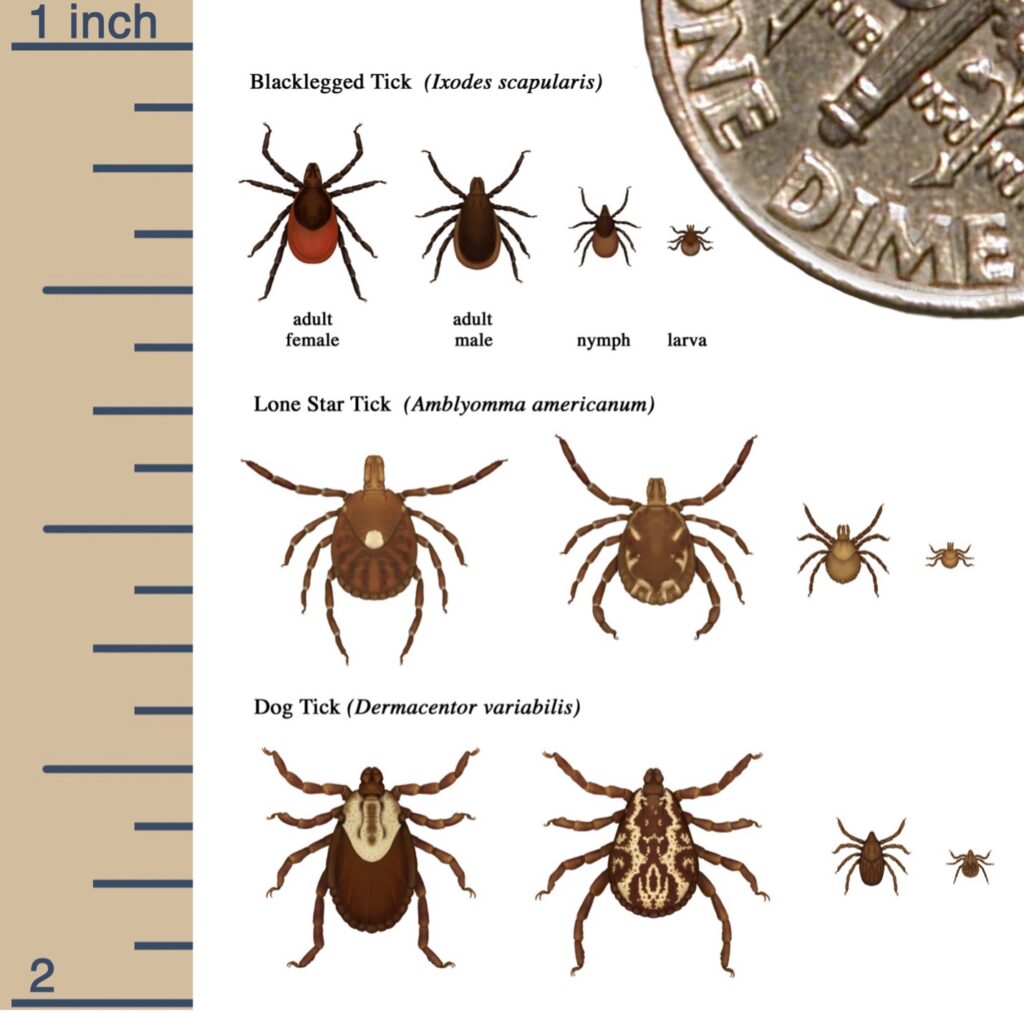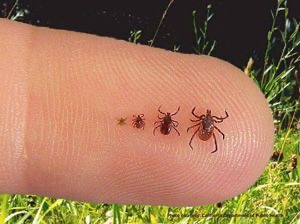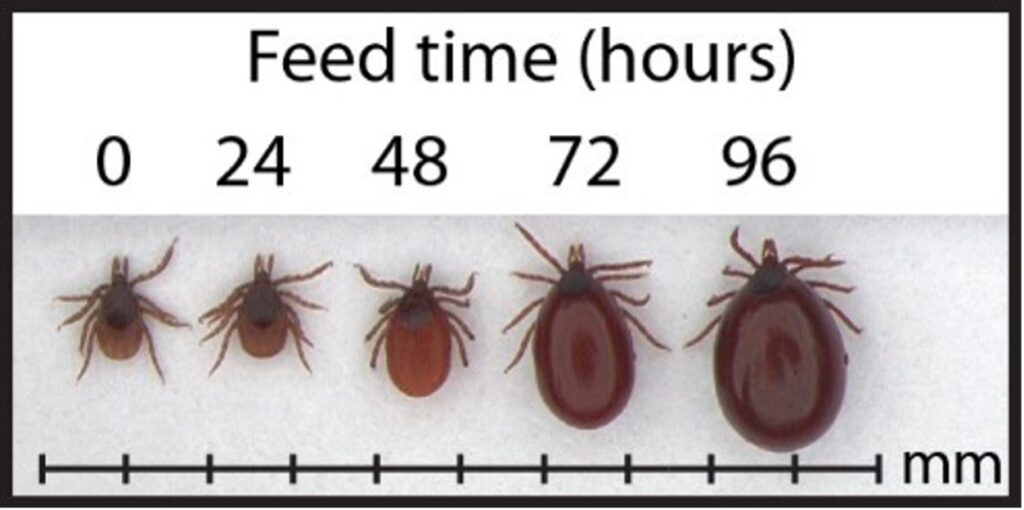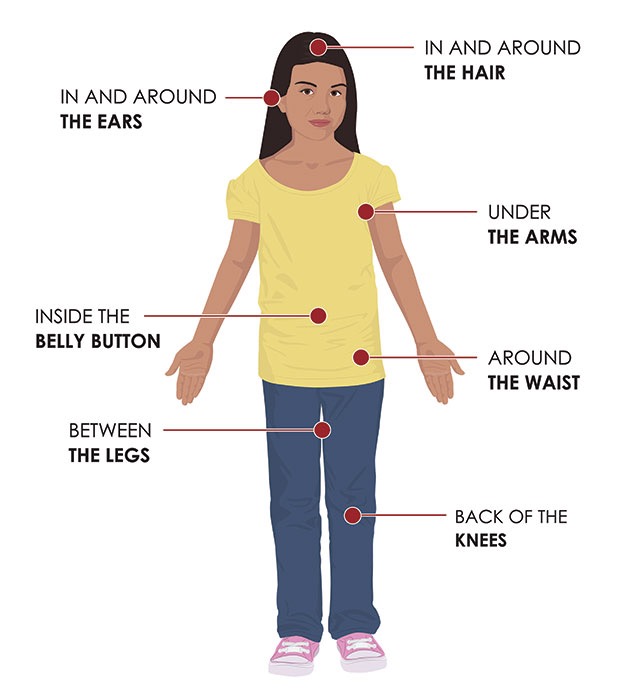Doctors’ Notes
BackTicks
Spring through Fall are seasons of colors and outdoor walks/play to enjoy nature’s beauty. It’s also a prime time for an arachnid to find blood hosts.
I’m talking about ticks, and these tiny creatures are present in our backyards and parks here in Western PA, ready to attach to a host to survive. Let’s take a moment and explore some basic facts about these creatures, prevention for all at risk, and removal if they’ve become attached.
Facts
- There are different species of ticks. The Deer Tick is the most concerning tick bite in PA.
- Pennsylvania is one of 12 states where 94% of all Lyme disease cases occur.
- Ixodes scapularisis the most recognized tick in the Eastern US because of its risk to transfer the organism to cause Lyme Disease. It’s an 8-black-legged tick which cycles thru 4 stages in its lifetime. The Nymph stage (size = poppy seed) is the most likely to transmit Lyme Disease and other infections. This stage is typical for April through June months. The Adult stage (size = sesame seed) can transfer tickborne diseases as well. Ticks take 3 years to complete a life cycle. Most importantly, ticks need blood at each stage of the cycle to survive. They will feed for 3 or more days at a time.

- Ticks like to live in wooded areas, brushy fields, tall grass, and leafy litter.
- They are most active during warmer months from April through September. (Temperatures > 50 degrees)
- Ticks attach to hosts using a “feeding pipe” inserted thru the skin. They secrete a local anesthetic to numb the area as they cut thru the skin to insert this “pipe” — and possibly transmit a disease. Most often the host does not feel the tick’s attachment.

Attachment Time = % Risk of Disease Transfer

(picture above is an Adult Deer Tick)
Risk of transmission of a disease are as follows:
<24 hrs —– 0%
<48 hrs —– 12%
72 hrs —– 79%
96 hrs —– 94%
Prevention
Keeping ticks from finding a host and attaching themselves is key to limiting exposure to tick-borne diseases like Lyme disease and Rocky Mountain Spotted Fever.
Dogs, cats and other animals close to your home can be carriers of ticks. Dogs are the most common. There is a vaccine for dogs to protect against Lyme disease, but it will NOT prevent dogs from being carriers of ticks. Treat pets with a flea/tick application to lessen the risk. Use of topical agents (for example Frontline) and external devices (collars) on pets can help repel ticks but make certain to use the appropriate repellent for the specific animal to limit adverse reactions from the medicines. A favorite product I use for my pets: Seresto collar. The collar is treated and will discourage ticks from even crawling on the animal (thus lowering the risk the animal will carry the tick into a home or yard). The collar lasts up to 8 months/use.
Humans should wear long pants and closed toe shoes to limit direct contact to ticks.
Inspect your pets and children within two hours of possible exposure. Common sites of attachment to humans are under arms, in/around ears, belly buttons, in skin creases like behind knees, groin, waistline, neck lines, and hairy areas.

Use of repellents on humans can be helpful to repel ticks. Essential agents against ticks include DEET (20% at least), Permethrin, and IR3535. Apply any of these agents to the skin, being careful around the face. Permethrin can be applied to clothing and can last up to 5 washings.
 Tick Prevention Bot (guide from CDC to help prevent tick bites and lower risk of transmission to areas where people will be (yard or house))
Tick Prevention Bot (guide from CDC to help prevent tick bites and lower risk of transmission to areas where people will be (yard or house))
Removal
If a tick becomes attached, calmly gather your necessary items to help remedy the problem. You can use a Tick Twister (sold in stores) or a good pair of tweezers with fine tips to grasp the tick as close to the skin as possible. A moderate steady pull should dislocate the tick intact from the skin. Do Not twist the tick or agitate it too much as it can cause the tick to regurgitate contents back into the host. Inspect the site and make certain no remnants of the tick remain. If the head of the tick remains but the rest of the tick body were removed, it is not necessary to get the head out. The body will push the head out over time and the head is not contagious for Lyme Disease or other tickborne diseases. Wash the skin with soap and water and observe. If a bullseye rash develops surrounding the original attachment site (usually within 3 weeks of attachment) seek help from a Kids Plus office. HERE is a link on Tick removal.
More Resources
For concerns about Lyme disease, including what to look for and how it’s treated, see my Lyme Disease Doctor’s Note. Lyme Disease and other tickborne illnesses are treatable if families notify our office of a tick bite or a tick attachment.
Ticks are not bad insects, and they should not scare you to be outside in nature. Be diligent in lowering the risk for ticks attaching to a host, but if a tick does attach itself to you, call our office for help on what to do.
Dr. Lucas Godinez
Lead Clinician, Kids Plus Pediatrics